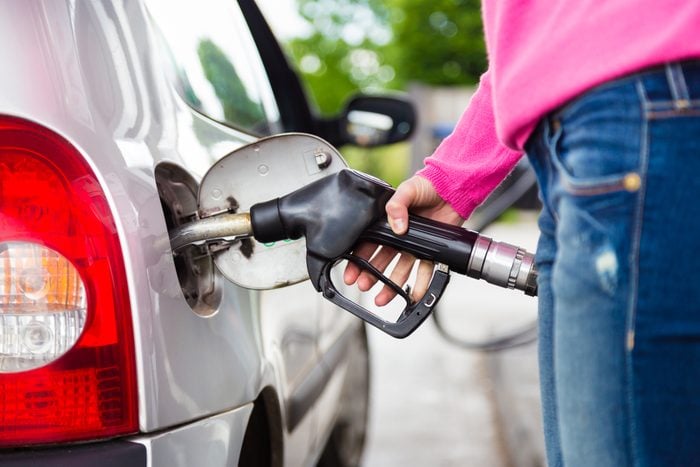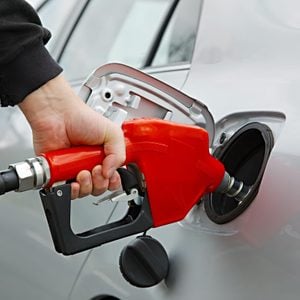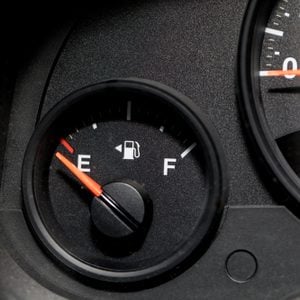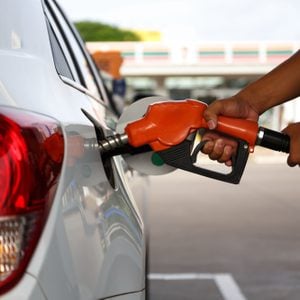How Do Gas Pumps “Know” When Your Car’s Tank Is Full?
Updated: May 17, 2022

Gas pumps have been around long before "smart" technology—so how are they able to seemingly detect when your tank is full?
If you tend to fill your car’s gas tank until it’s full, rather than paying for a specific amount of gas, you’re very familiar with the thud that the pump makes when it shuts off. Once you hear that, you know your tank is full, and you can stop filling up. But how does that work? How do gas pumps know when to stop? If anything, you’d think it would be a gauge on your car, not the unattached pump, that would fill you in (pun not intended). After you learn how gas pumps know when to stop, find out what happens if you put diesel in a gas car and where you can find cheap gas near you.
How do gas pumps know when to stop?
Well, it has to do with the way the gas pump works. When you fill your tank with gas, you’re replacing the air that’s in there. “The more gas goes in, the more air must come out,” explains Jake McKenzie, Content Manager at Auto Accessories Garage. “It comes out through a small pipe located just inside the gas nozzle.” Learn more about weird car features you may not have known you have.
And pressure has built up in the tank; that pressure is released as the air escapes. McKenzie compares it to holding your thumb over a garden hose: “Blocking part of the hose [increases] the pressure of the water inside, [causing] the water leaving to spray out at an even greater velocity.” When you start to pump gas, the pipe, which has been “blocked” like the hose, releases the air quickly. “This expelled air brings with it a pressure that’s strong enough to hold the valve in the open position,” McKenzie says.
So that’s what happens while you’re filling up your tank. And once it’s full of gas, gasoline, not air, now reaches the pipe inside the nozzle, which evens out the pressure. As McKenzie explains, this creates “a small suctioning force (known as the Venturi effect) that switches the valve to the off position.”
What happens if you keep pumping gas after it stops?
“Topping off” your tank is one of the potentially dangerous gas-pumping mistakes you might make. While you may think that a couple extra drops of gas won’t do any damage, think again. Gasoline needs room to expand, so overfilling your tank may build up extra pressure in your car and cause a hazardous leak. Liquid gas can enter the carbon filter that is intended only for vapor. This can ultimately damage your engine.
On another note, topping off your gas can cause a few droplets to spill onto the ground. This can be harmful for the environment and to other people’s health. Gasoline spills can affect the ozone, and you may think that a few droplets from you won’t matter, but if everyone spills a tiny bit of gas every time they fill their tanks, the environmental repercussions could be serious.
Now that you know how gas pumps know when to stop, find out how you can get better gas mileage, and ultimately save money on gas.
Source:
- Jake McKenzie, Content Manager at Auto Accessories Garage



